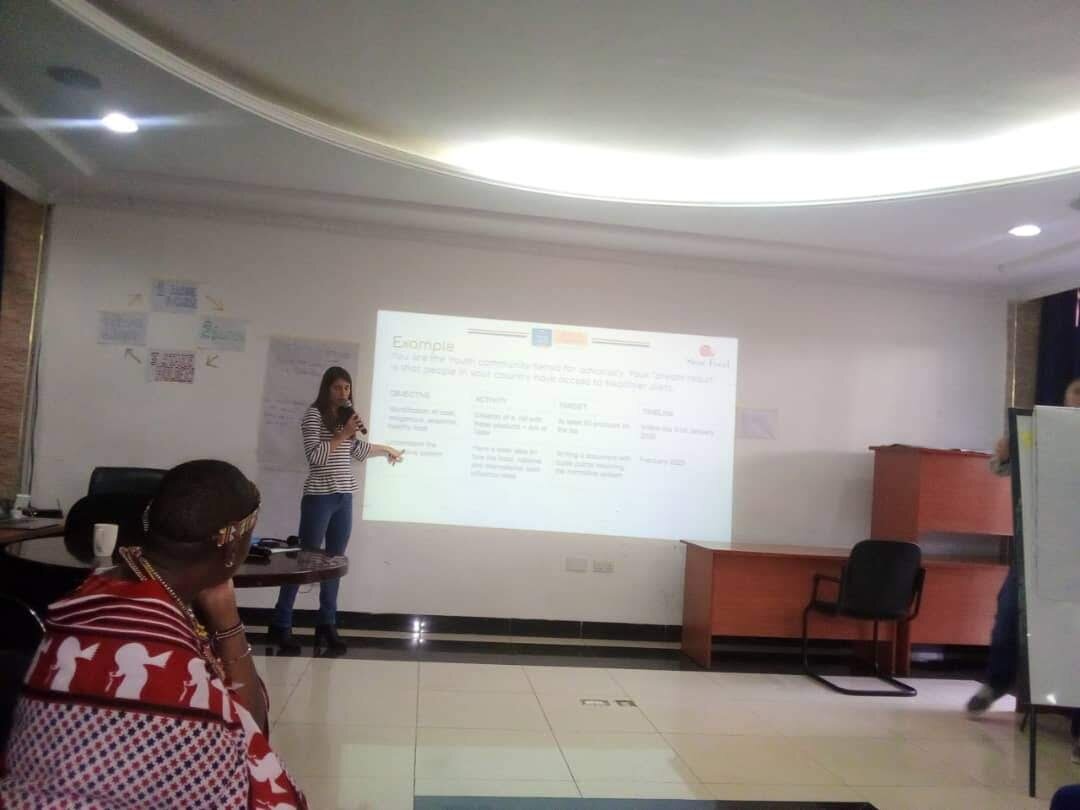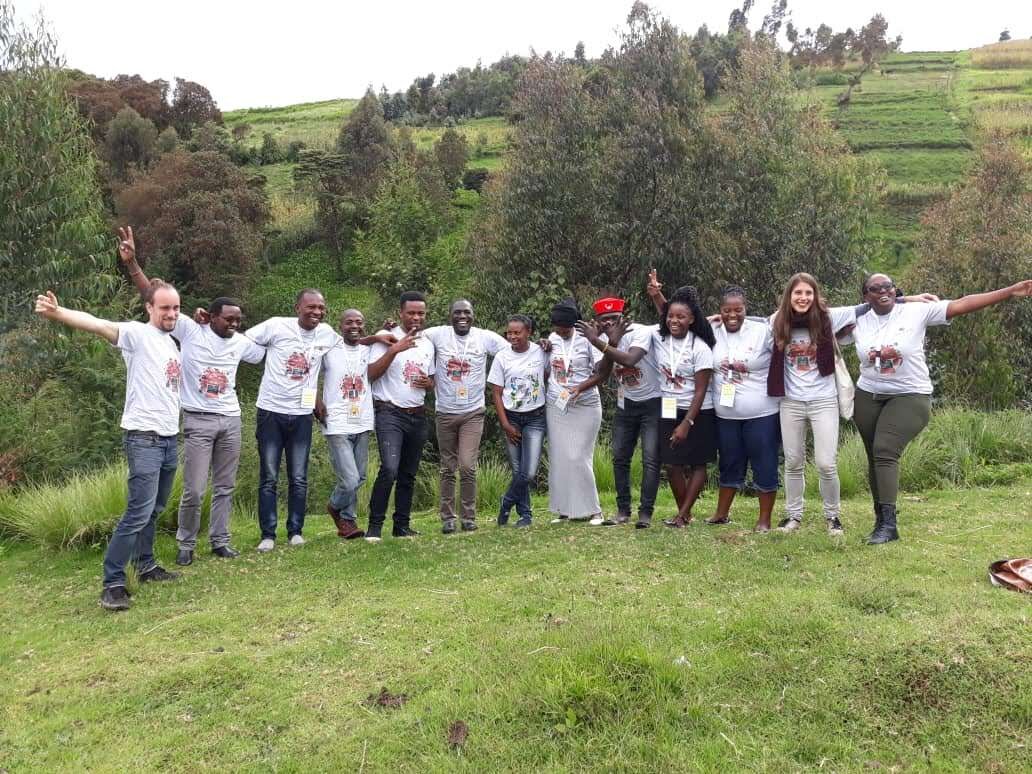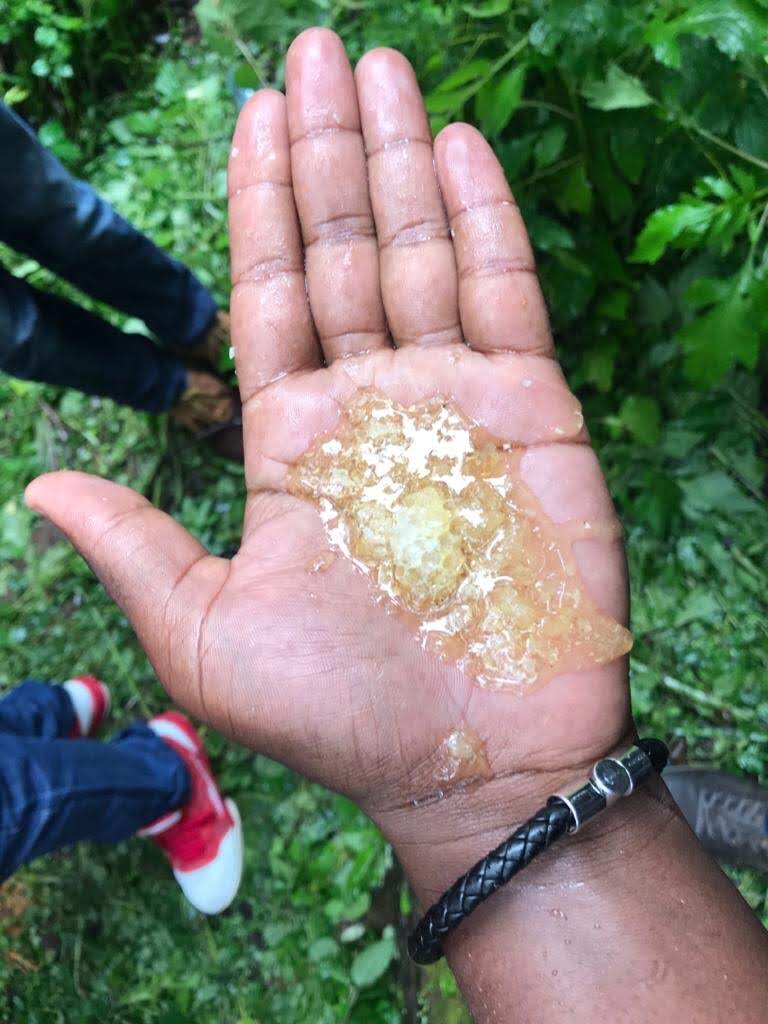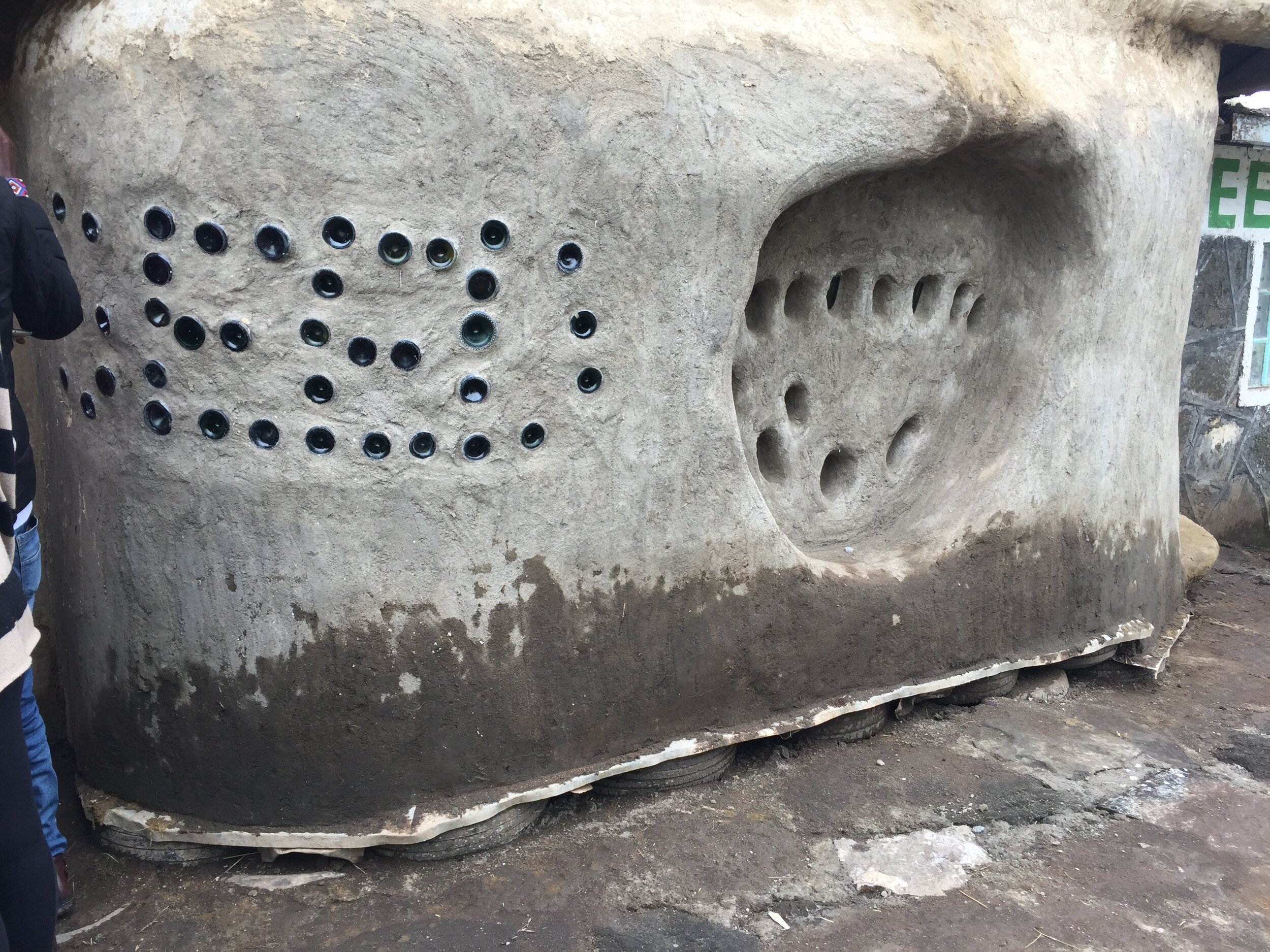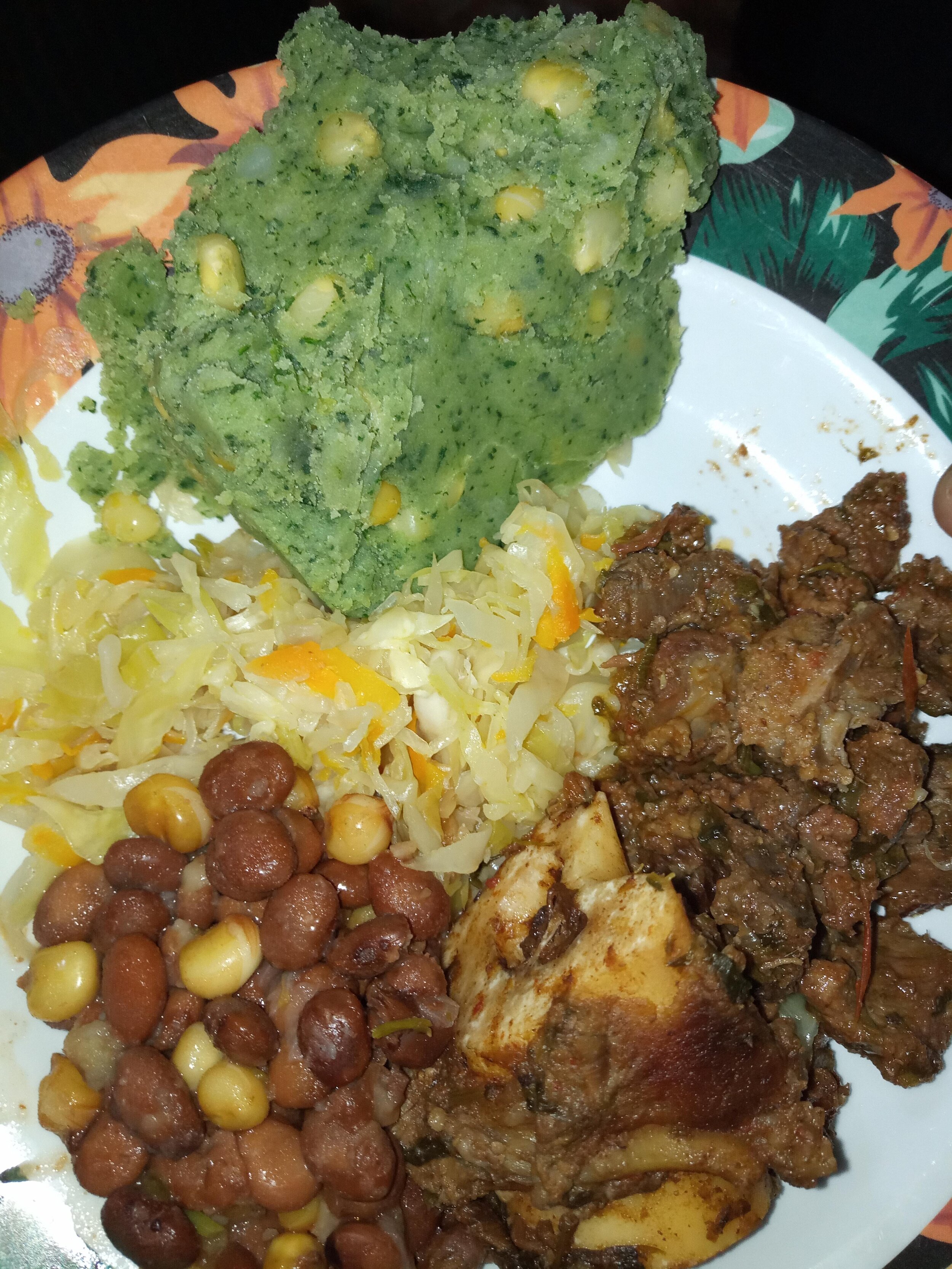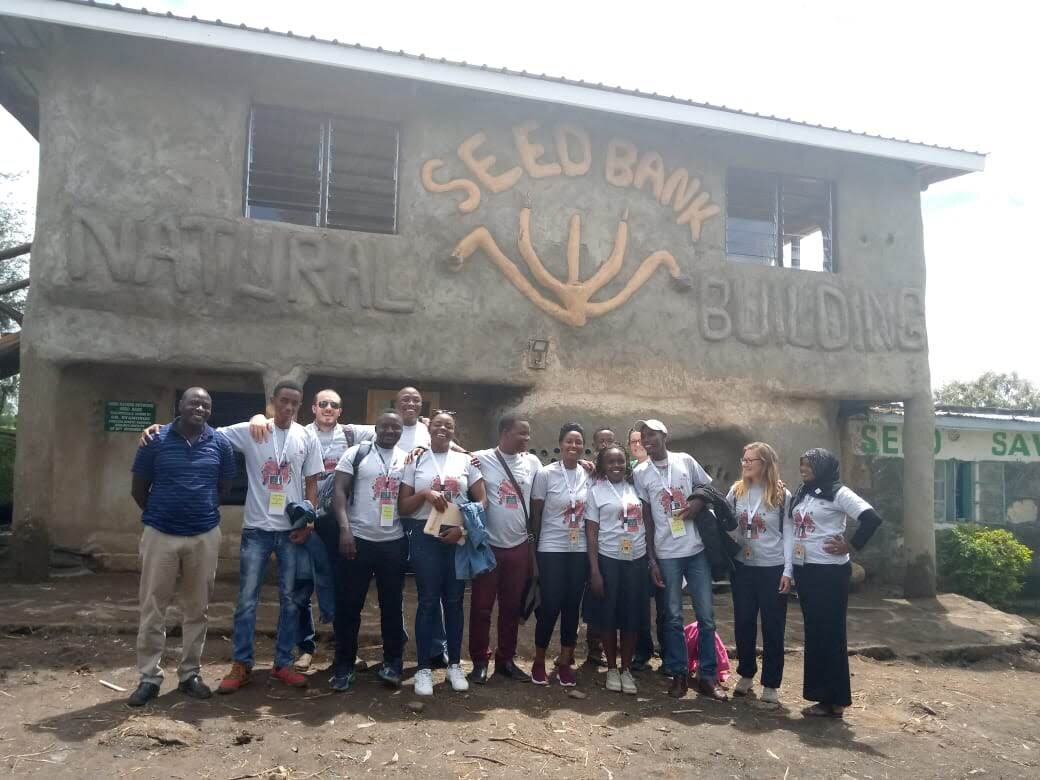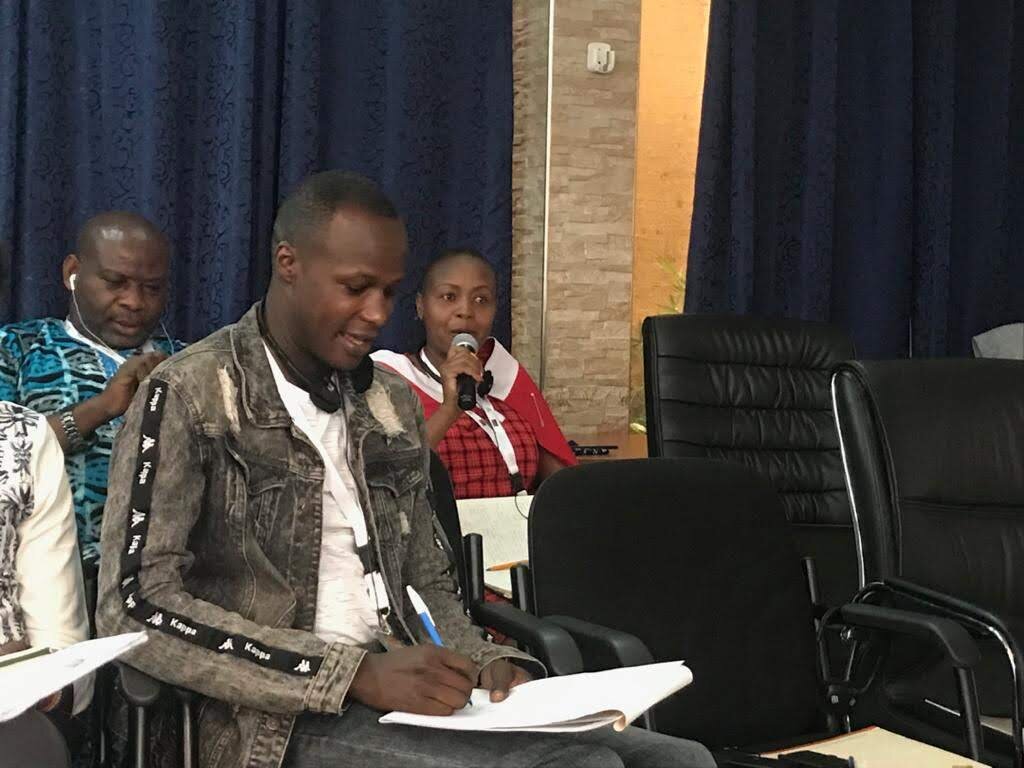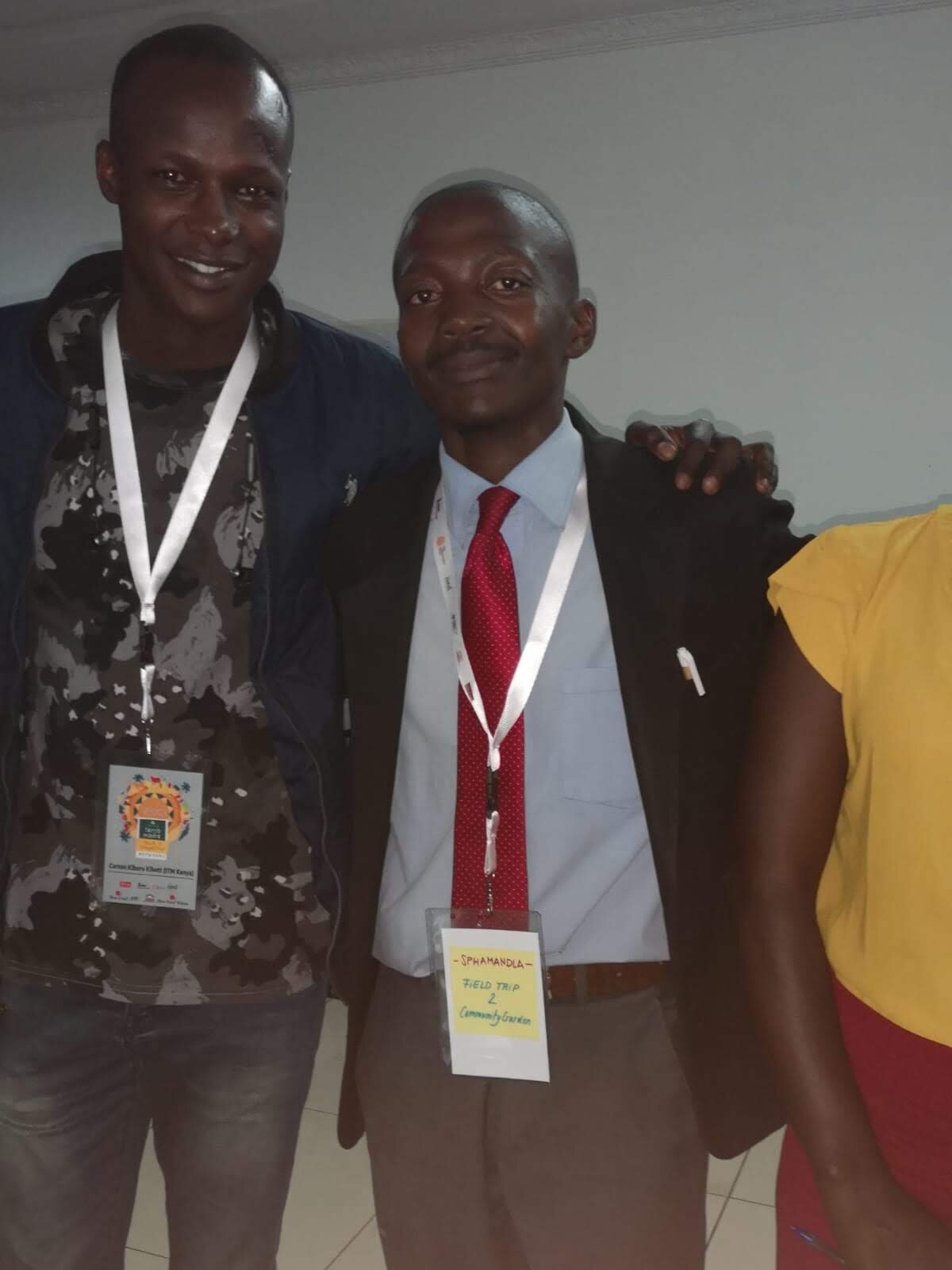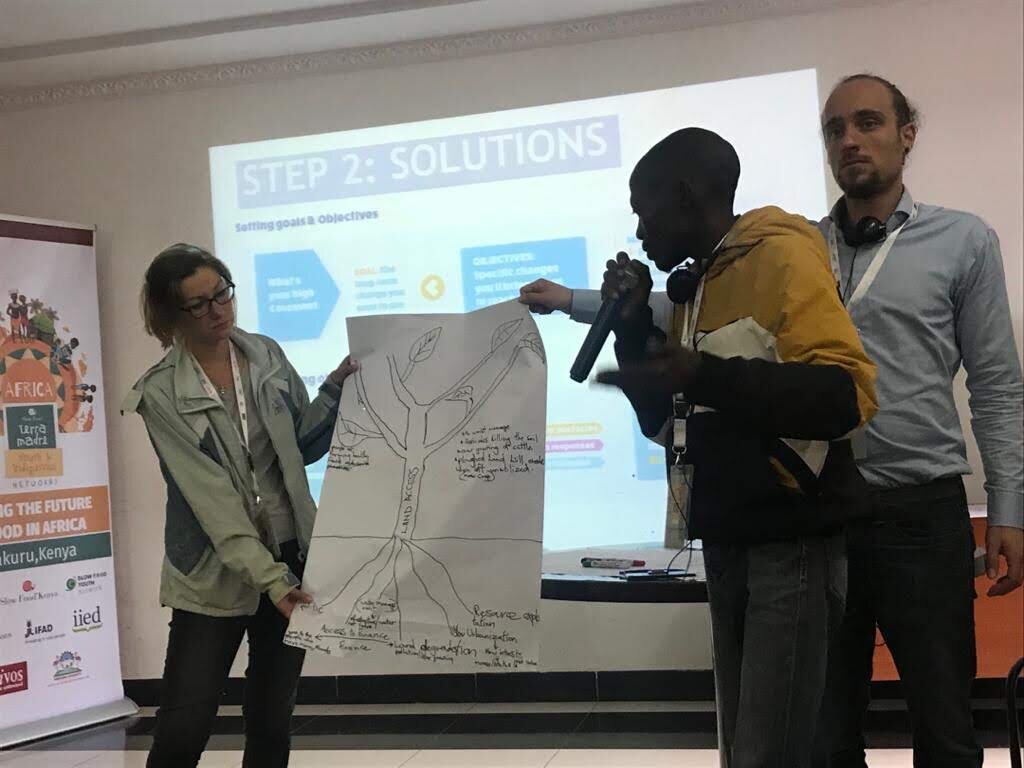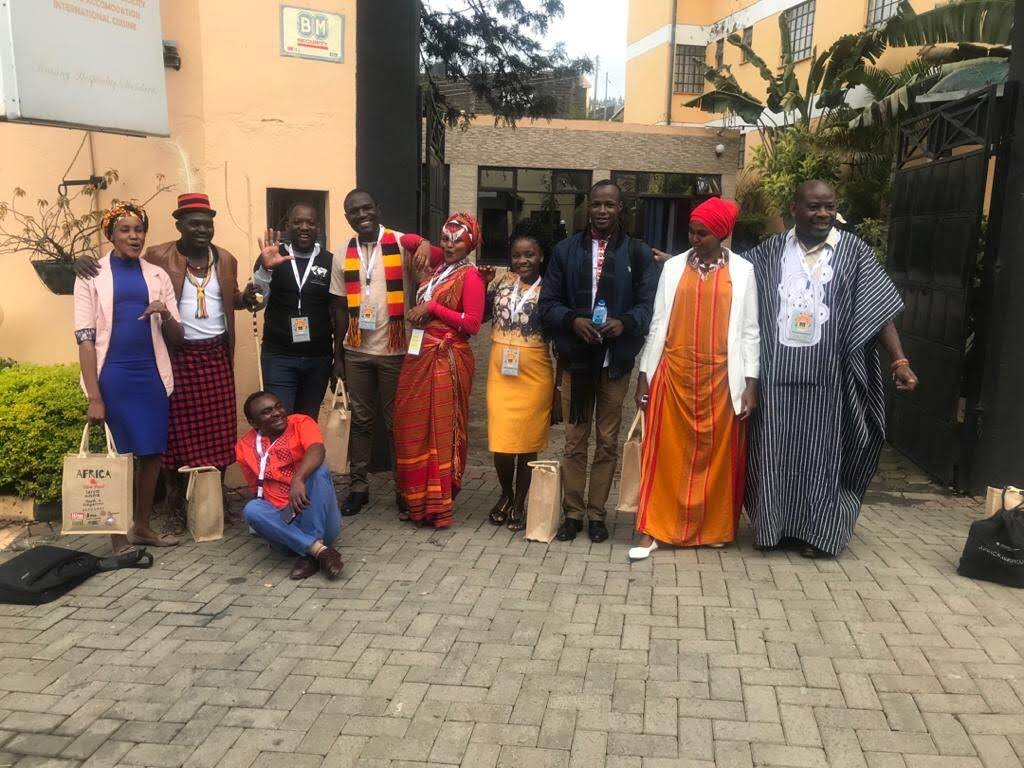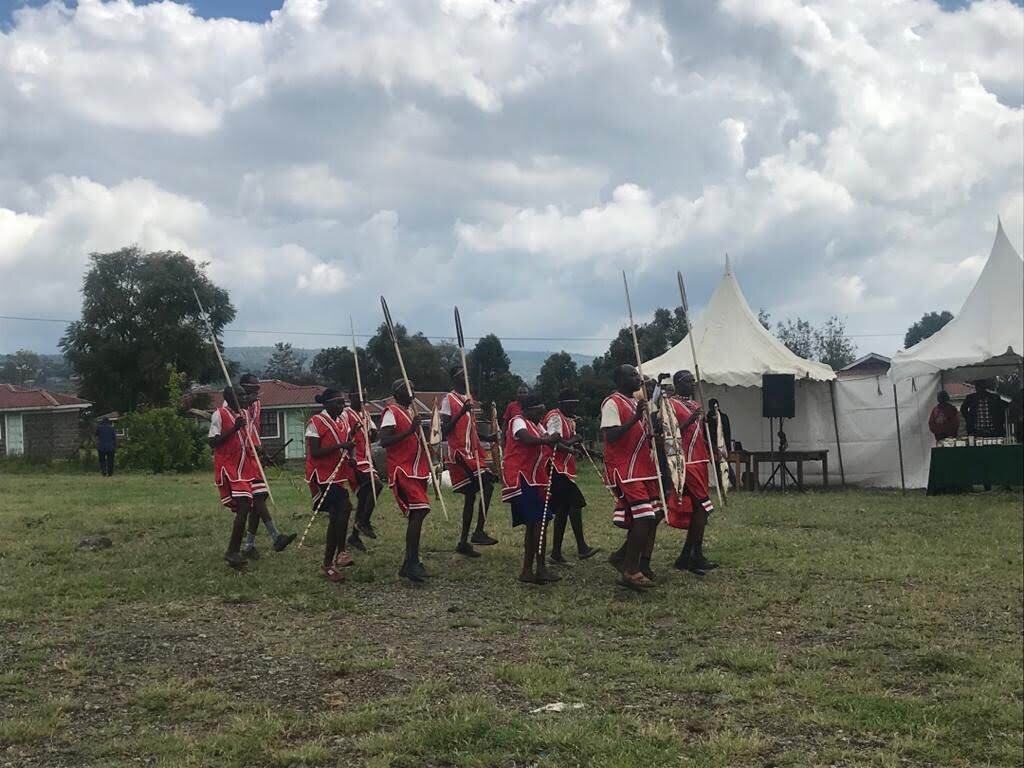Slow Food conference in Kenya
In October, I was nominated by a member of our Slow Food community to travel to Kenya, as one of two representatives for South Africa, to the Slow Food Youth and Indigenous peoples “Shaping the Future of Food in Africa” week-long conference. When I applied, I didn’t think I would actually be accepted. Receiving the email to say I had been chosen was a flurry of emotion! The other South African Slow Food delegate, Spha, was also from the Midlands. We had only met once but it meant that we could be a strong united force in the Midlands. Having only just recently joined a Slow Food community, I wasn’t too sure what to expect.
The course was hosted by Slow Food International, Slow Food Youth Networks and HIVOS with the aim of building the capacity and advocacy skills of indigenous and non-indigenous youth from 7 countries in Africa, namely DRC, Tanzania, Zambia, Uganda, Kenya, South Africa, and Malawi to shape the future of food in Africa. A week of training and establishing action plans for our communities culminated in a Terra Madre Day event and presentation of these actions plans by each respective country to an audience of local Slow Food supporters as well as various stakeholders. The aim of the conference was to build a united African youth network to advocate for the protection and restoration of indigenous food systems and to promote good, clean, fair food. https://www.slowfood.com/young-indigenous-peoples-to-present-an-action-plan-to-shape-the-future-of-the-african-food-system/
A full week of teaching, learning, and growing came to an end on Saturday, December 7th, as we wrapped up “Shaping the Future of Food in Africa”. This was more than just an advocacy and capacity-building workshop; it was a moment of intercultural bridge-building that united delegates from seven African countries around one goal: good, clean and fair food for Africa. – Anna Messerschmidt on Slow Food.com
Spha and I met at the airport, early on a cloudy Monday morning, with tentative excitement palpable. We checked in our luggage and made our way through the security checks. We waved goodbye through nervous tears as we headed to the boarding gate. I was totally daunted by the thought of travelling to Kenya. In the weeks leading up to the event, there was so much to do in between the end of the school year, and the farm being in peak summer swing, that I didn’t have much time to really let it sink in and suddenly it was all happening! We boarded our flight, along with business people flying from Durban to Johannesburg. From there, we made our way to international departures, through border control and boarded our flight for Kenya. Everything went so smoothly. It was Spha’s first time flying out of the country. As I watched him experiencing Christmas morning elation, the enormity and excitement of this opportunity set in.
Departing Johannesburg
Arrival in Kenya
Jomo Kenyatta International Airport
Our transport
We have arrived!
First view of Nairobi
Photos: departing from Johannesburg - Arrival in Kenya - Jomo Kenyatta International Airport - Our transport - First photo in Kenya - First view of Nairobi
We landed in Kenya, at Jomo Kenyatta, an airport very different to the buzz and confusion of OR Tambo in Johannesburg! We found our lift and waited for the team from Zambia to arrive. This gave us a bit of time to find out feet and settle after the rush of the morning. We watched the people bustling about the airport and gained a sense of Kenya. Team Zambia arrived, full of enthusiasm and friendly smiles, and we were on our way.
The Great Rift Valley - both times we drove past it was in mist!
The trip to the hotel in Nakuru, from the airport in Nairobi was an experience! Road construction between Nairobi and Nakuru meant many roads were mud and traffic was heavy. It took us 4 hours to get to the hotel. For a nervous passenger, a drive where rules, lanes and tar were optional was overwhelming!
On arrival at the hotel, there was no WiFi and we were told we were going to be transferred to another hotel. Luckily the second place had WiFi so we could connect with home. Spha was exhausted at this point and went straight to bed. I went and met the Slow Food team, very grateful to have our Zambian friends as we walked into the buzzing dining hall.
The buffet - Breakfast - Conference room- Emboita Hotel
Our hotel rooms were very comfortable and a well-earned night’s rest had us bright-eyed and bushy-tailed the next morning for the start of the conference. We settled in, met loads of new people and got ready for an intense, fast-paced course.
The view outside the hotel, Skyline, where we stayed - Walking between Skyline and Emboita Hotels
the food
The course was held at the Emboita Hotel. We were transferred back to stay at this hotel a few days later. The kitchen was headed up by Zack, a member of the Slow Food Chef’s Alliance, so we were able to enjoy locally sourced traditional fare. We ate ugali (ground maize), mokimo (potato and stinging nettle mashed together), sweet potato, arrow root, githeri (beans and corn), spinach, matoke (plantain banana stew), chipati. Tea time treats were usually mandazi (little baked squares that taste like a small unglazed doughnut), samoosas and sweet potato.
The Course
The focus of the course was advocacy – advocating, promoting and preserving traditional, indigenous ways associated with food, at a practical and policy level, while encouraging intercultural knowledge sharing. Food is politics. Through decentralising, and empowering local communities, training youth and building networks, large scale change can take place.
“They are giants but we are multitudes”
A special focus was on gender equality, so a large number of the delegates were women. One of the criteria for the conference was the selection of women over men. It was interesting to learn the extent to which women struggle against male domination in various ways in various countries – the determining of crops to be planted, meals to be prepared using said crops, yet having no contact with sales and income, thus bearing the brunt of food insecurity and climate instability. Many of the men and women participating in the course are already involved in political discussions and organisations to defend the rights of women in agriculture. It was inspiring to hear their stories.
We had breakaway groups discussing various problematic areas in food production such as land rights, gender equality, agro-ecological practices, seed saving, and GMOs and breeding technologies. This allowed us to have more in-depth discussion on a particular topic, share experiences, and get to know each other better before presenting back to the group.
HIVOS, a Dutch NGO, partnered with Slow Food on the presentation of the advocacy tools. HIVOS has a number of areas that they work in, to find new solutions for persistent problems. One of the more relevant areas, in this case, was the Sustainable Diets for All programme. Under the guidance of the HIVOS delegates, we had to outline problems in our communities on the first day, and then repeatedly ask why to start to get to the root of the problem. The rest of the week’s work would be based on the identification of this problem. We would explore how to define this problem, solutions, how to advocate for our solutions, budgets and a road map of actions in between. The pace of the course was fast, and content-heavy, but very useful. (Article by Slow Food: https://www.slowfood.com/slow-food-youth-network-and-indigenous-terra-madre-ready-to-flourish-in-africa/)
Roadside market - “Boda Boda” – common transport - scenery
Field Trips
The second day was a day of field trips to visit examples of regions, organisations, and people preserving traditional food products and practices, at risk of extinction. We were split into three groups. One group went to Karirikania village to learn about their community garden where volunteers maintain the garden, but everyone can benefit from harvesting out of it, including selling some of the produce for income. The group was treated to lunch by the community, from the garden!
Another group spent the day with the Ogiek, an indigenous community living in the Mau forest and learnt about their natural honey harvesting techniques as well as land rights issues faced by the people.
I was part of the group that visited the Seed Savers Network – an organisation that grows and saves seeds to preserve biodiversity. A tour of the gardens allowed us to learn about different environmentally sustainable growing methods for plants that were used to produce seed to be saved, especially indigenous seeds. The different growing methods not only ensure biodiversity but also secure varieties of plants grown in various ways
Seed Savers Network: exploring Hugelkultur - Lake Elementaita - Seed Savers Network: Drip Irrigation - Seed Savers Network: Grafting Avos - Seed Savers Network
Seed beds on the left, seed bank building on the right
Following a moment’s silence and thought about our impact on the environment at a personal level, we were given a tour of the seed bank that had only been opened days prior to our visit. We were able to see and learn about the storage of seeds, as well as consider the preservation of indigenous seeds and breeds too.
The Seed Savers Network is not limited to this seed bank and seed store, but made up of individuals and organisations who save and store seed, making it more accessible for all, since commercial seed is controlled by a few large corporations and thus very expensive. We were invited to join a group of women, part of this network, at their home in Gilgil, for a typical Kenyan lunch. Only the meat was purchased off the farm, everything else came from the kitchen garden, where our group photo was taken.
All of these small scale producers and organisations use age-old wisdom that naturally protects the environment and promotes biodiversity. Being removed from living so close to nature, so many of us do not know or understand what it is to truly rely on the biodiversity of our region. (Article by Slow Food https://www.slowfood.com/exchanges-on-the-field-with-the-delegates-of-shaping-the-future-of-food-in-africa/)
Developing our Action Plan
Day Three saw us back in the conference room with an exploration into Slow Food communities, youth networks and indigenous networks.
Since Slow Food is about global networking and connecting, we decided to establish a community for African Youth represented at the conference with the aim of taking the knowledge we had gained from the course and implementing it back home to promote sustainable food systems.
Representative co-ordinators of the Slow Food community from (left to right)
South Africa, Tanzania, Uganda, DRC, Kenya, Malawi, Zambia (Slow Food Uganda presenter)
Spha was elected spokesperson for the entire Slow Food community: African Youth for inclusive and sustainable food systems
Being from 7 different African countries, there was much that united us, but distance made us vulnerable. By formalising the connections made during the conference, we can hold each other accountable for implementing changes in our regions, in line with Slow Food’s strategic vision of 2030 which is to defend food and cultural diversity, educate and advocate for food systems. After much discussion on the name, aims, objectives, goals and priorities, over the next few days, we defined our community: African Youth leaders for inclusive and sustainable food systems. (Article by Slow Food: https://www.slowfood.com/new-slow-food-community-founded-african-youth-leaders-for-inclusive-and-sustainable-food-systems/)
A large portion of the day was focused on gender – on creating equality and equity, exploring roles, resources, values, participation, and creating agents of change through accountability. During this presentation, we were called out for interviews too.
We were later presented with several successful political advocacy case studies from different countries, focused on the various themes we had been addressing – gender, GMOs and breeding technologies, agroecology, healthy diets, and land rights. It was interesting to see how involved many of the participants were at the policy level, the responses they have had from governmental institutions and actions that have been taken as a result. Part of our advocacy training was to identify our personal capacity – were we advocating at a civil society level, advocating on behalf of people, advocating alongside people, or driven by the people? There was a pretty even spread at all levels but hearing these case studies is a call to action to assess and develop one’s own participation on the advocacy spectrum.
Spha brought a copy of Mnandi for each country. Also some dancing between sessions.
The rest of the day, and into the next were focused on the development of our local action plans, equipped with the knowledge gained from the field trips. We divided into our respective countries and began working on our action plan – redefining our problem and seeking out solutions. This was the part of the course I most enjoyed. Feeling equipped and motivated, we began to consider our South African context and problems we experience. For Spha and I, a large problem was land use – whether by political or environmental barriers – land is not utilised to its full capacity as a result of practice and access. We began considering this from social, environmental, and economic viewpoints. We had to develop a solution and a goal for the long term change we wanted to see. Breaking the goal into smaller objectives, each consisting of a series of activities was the next step. Our plan involved setting up community and school gardens, networking existing gardens as part of a course on agro-ecological farming practices that involved visits to farmers, gardeners and producers of all levels modelling successful agro-ecological practices.
The last day of the training involved taking this action plan and firstly formulating resources needed, then identifying relevant stakeholders before planning how to deliver the message based on the audience. For each objective, we had to plan, down to the paperclip level, what was needed for our project, before pitching for funding. We learnt about putting together an inspiring pitch, presentation skills, and content. Once we had a plan, we had to present it to the organisers, each pretending to be either governmental or private institutions, organisations or individuals.
We worked through tea time, lunch time, and after dinner on our pitches, refining our 1 minute description of the problem, solution, and how funders can get involved, as well as preparing a slideshow presentation.
Terra Madre Day Celebration
The week of training culminated in a Terra Madre Day celebration at the local agricultural training centre. Terra Madre Days are global celebrations of good, clean, fair food, promoting biodiversity, production, taste and tradition. With most participants in their traditional dress, we packed into a bus and headed out for the day.
Our bus - Slow Food team in traditional dress- Eating Camel Meat- Camel Milk
The day consisted of a series of conferences on climate change and indigenous food systems, open to the public.
A display of Ark of Taste products by the public, and by the conference participants, highlighted the diversity of Africa – including indigenous seeds, plants, and food. The Ark of Taste project is an international catalogue of endangered foods – seeds, breeds, and other food products, to preserve unique, sustainable production and products with the aim of making these products secure and available for consumption through sustainable growing methods.
The day was spotted with traditional dancing by Endorois, Maasai, and Ogiek people.
Lunch time revealed just how many people were attending the course when we snaked our way down the road to the dining hall, filling every seat in both the dining hall and conference hall and then some! Remarkably, those giant pots filled every single belly!
After lunch, it was time for the participants to present their action plans to all present, members of the public and relevant stakeholders – with South Africa’s presentation getting a special mention:)
Kenya
DRC
Tanzania
Malawi
Uganda
Spha rocking it for South Africa
(Article by Slow Food: https://www.slowfood.com/final-reflections-on-shaping-the-future-of-food-in-africa/)
The next day was time to pack up and start the journey home. After a breakfast of dancing, laughing and exchanging phone numbers, we all piled into our various buses and began our trips home. Within hours though, the Whatsapp group was abuzz with everyone sharing stories and photos. Such a beautiful thing to experience – such difference yet being so united by a common cause.
It is not often that one is able to be in a room filled with people from so many different countries and cultures, yet united. I would have loved more time to get to know the depth of the issues faced – indigenous peoples being displaced, food security, GMOs, poor diets – but to understand these issues from the perspective of each country and culture because a surface level understanding shows the issues to be the same in South Africa, yet some of the reasons and ways of dealing with them are very different.
Comparing African currencies
The issue of poor diets and resulting non-communicable diseases was common in all countries. The staple foods are often from GMO seed. The most affordable foods are packed with junk and lack nutrients. The quality of the food is causing stunting, obesity, diabetes, cancers and other diet related diseases. Yet most people either don’t have access to seed or land to grow their own food, or are not able to afford to eat organic, clean foods. This should not be the norm.
The perception that using ancient traditional wisdom when producing, preparing, and consuming food is going backwards and not seen as development, has led to a culture of fast food and shop-bought junk, and disease-causing products masquerading as food.
Yet ironically, in between this, there is a great move towards food independence, and being ‘off the grid’ when it comes to food and economic security. It was inspiring to hear what is happening at a policy level, organisational level, backyard level in some of the other countries. It doesn’t feel all so hopeless when one sits in the middle of the fire of passionate people actively making a change.
I leave the week in Kenya with a happy heart, filled with memories of wonderful friends made and connections established. My head is filled with ideas and inspiration from the stories, advocacy campaigns and insights shared, as well as the content of the course that will be hugely helpful in continuing with the action plan for our area that Spha and I devised, and of course for future projects.
This was an epic trip – it wasn’t without its moments of complete overwhelm, fear, and lots of cold showers – but that is what growth and change is all about – academic learning, emotional learning, cultural learning, personal growth, stretched and supported at the same time, fresh inspiration, being challenged, and being refueled!
What an adventure!
Jomo Kenyatta International Airport
Boarded the flight
Must have Kenyan coffee and chocolate to take home!
Back in SA, at border control













